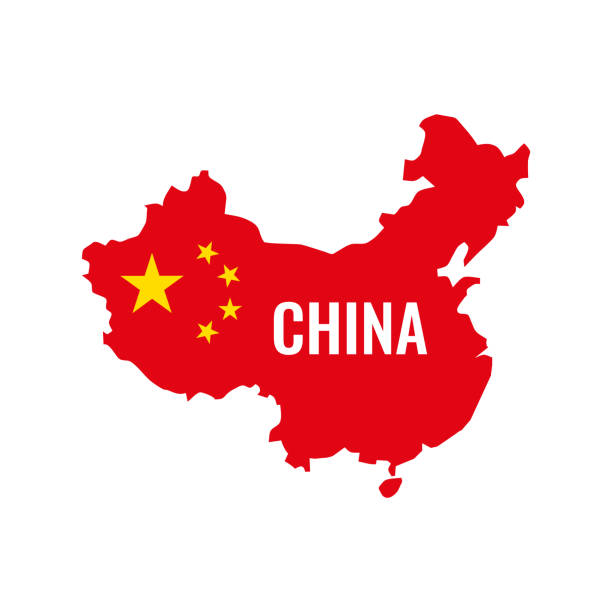Lessons from China’s targeted poverty eradication strategy
In 2018, I read an article by Solomon Elusoji in Thisday newspapers, which caught my attention about the way and manner that the Chinese government has set about trying to eradicate poverty in that country of 1.5 billion human beings. China set a target for total poverty eradication by the year 2020. But then came […]

map of china
In 2018, I read an article by Solomon Elusoji in Thisday newspapers, which caught my attention about the way and manner that the Chinese government has set about trying to eradicate poverty in that country of 1.5 billion human beings. China set a target for total poverty eradication by the year 2020. But then came COVID-19, a phenomenon which I believe was contrived and which knocked off many entities from their preset targets to achieve greatness by the turn of the decade.
The whole world spent a significant year (2020), getting scared about sickness, being fearful about everything; wearing masks, and doing next to nothing. But before then, I saw that China was a very serious country about their ambition and results showed that they put in good efforts. I recall watching on Youtube, as the Chinese President Xi Jinping travelled to remote villages in the hills of China, to meet poor people, sit with them in their rooms, ask what they wished to achieve, taste their water and their food, and give them hope. I was touched. The man went with no airs whatsoever.
I learnt also, that in order to totally eradicate poverty in the land, the Chinese first did two things – work on the minds of their people, and get rid of poverty mentality wherever it existed (e.g. the idea of living in slums because your parents lived there and it is your ‘heritage’ – this is one area where Nigeria will have a lot of problems if we get serious about eradicating poverty), and also properly documenting families – having social workers who understand the needs of each family and therefore ‘targeting’ specifically the needs of each family, not merely spending in an unaccountable fashion the way Nigeria’s Ministry of Humanitarian Affairs here has been accused of doing.
They don’t just say, “We have gone to that village and given each person x amount of money.” No. Instead, each family or household has a file and each one has a specific agent of government charged with making their lives better. Some families have issues with illnesses. Others with education. Others with unemployment.
- Vox Pop: Where do you get your news and How easy is it to spot fake reports?
- ASUU knocks FG over dissolution of universities’ governing councils
For a 1.5 billion people country, China has done incredibly well. The 2020 target has been reviewed to this year. And the last time I checked less than three million out of 1.5 billion Chinese were considered poor. Note that poverty cannot be 100 per cent eradicated. A very low number is the usual target and that is where China is presently.
Elusoji’s article revealed to me that it was possible to co-opt the private sector into poverty eradication programmes. Just as China had created its own brand of capitalism – state-led – when we thought no new innovation could come in that regard, that country also fashioned a way of involving the private sector. A private company (Evergrande) was charged in the case that Elusoji covered, with providing a certain community with all the necessities that will make for a good life – but to also help the villagers power up their productivity by a factor of 10. Check this commentary from the article:
“The government is mainly responsible for policy support and logistics services, while Evergrande is responsible for the construction of the breeding farm and providing the start-up cows. The partnership also involves a leading beef cattle production company, China Hengrui, which is responsible for professional farming, processing and sales.
“We believe this is the fastest way to increase the poor farmer’s income. We do not change their lifestyle. They still plant their maize, which is their original source of income. But now they can supplement their income and increase it by more than a hundred per cent.
“This initiative has seen the local farmers’ income rise to as high as 30,000 RMB per year. And each household receives dividends from profit derived from the cattle business. Also, the presence of the breeding farm has driven the development of silage planting, processing and transportation in Dafang County.”
I also looked at another write-up on the subject matter. Titled ‘Ending Poverty in China – Lessons for Other Countries and Challenges Still Ahead’, a World Bank article dated 2016 by Chengwei Huang (https://blogs.worldbank.org/eastasiapacific/ending-poverty-in-china-lessons-for-other-countries-and-challenges-still-ahead) lists some lessons from the Chinese experience as below:
Continuous reform and innovation; sustained and steady economic growth with policies favouring poor regions and poor people.
Integrating poverty alleviation into the national development strategy, and organizing large-scale poverty alleviation programs with targeted programs for women, children, disabled people and ethnic minorities;
- Adopting a development-oriented poverty alleviation approach that focuses on development as the fundamental way to get out of poverty, and building poor people’s capacity to help themselves.
- Pursuing a strategy of balanced urban and rural economic-social development, getting industry to support agriculture and cities to support rural areas.
- Developing infrastructure, including roads, water and sanitation, electrification, natural gas supply and housing.
- Mobilising all resources for poverty reduction, including both public and private sectors.
Integrating general and special favourable policies, development-oriented poverty alleviation and social safety nets.
